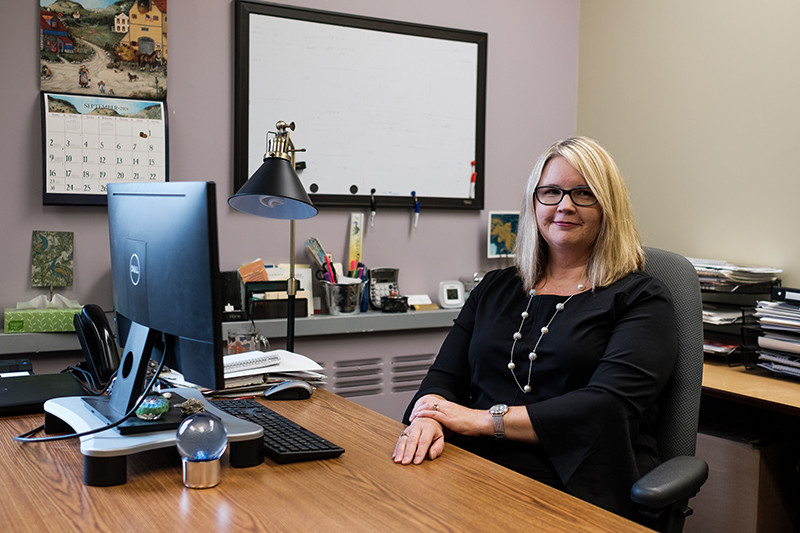Balance, challenge and support
Finding mental wellness within the academic life
September can be a busy time, especially in university. With much of the day spent maneuvering through the semester, there is little time to rest and recharge. For some students, the stress can add up and set a precedent for the rest of their semester, year or time spent in post-secondary
education.
According to a 2016 survey conducted in Ontario by the American College Health Association (ACHA), 15 per cent of college or university students are affected by depression, and 18 per cent are affected by anxiety.
These are only a few of the mental illnesses that impact students across Canada. Stress can lead to or worsen mental illnesses, especially when the person is under academic pressures.
Mental wellness is an issue that should be tackled by a whole community. Everyone has to do their part. On campus at the University of Winnipeg (U of W), there are many resources for assisting with mental health and mental illnesses.
However, systemic issues in the post-secondary system present challenges for student wellness. According to members of the student body, as well as the administration, high tuition rates and heavy workloads add to students’ struggle to achieve the means to attend university.
In the past, university was only accessible to those who could afford it – financially and socially, according to Inga Mychasiw, director of student support services. Now, some students work low-paying jobs, keep up with their social lives and take care of their families, all while attending post-secondary education.
A place to learn from mistakes
So how can the university system accommodate students and maintain its integrity regarding training and education?
Sophia Hershfield, a third-year student at the U of W, believes students must keep in mind that in university, mental health should not be trumped by academic pressures.
Hershfield has a passion for mental health awareness and support. She founded the Student Council Mental Health Committee at her high school, Gray Academy.
Hershfield encourages staff to support an environment where growth is at the forefront.
“The biggest thing is building a relationship between students and faculty and reminding students that one bad grade is not the end of the world,” Hershfield says.
Undergraduate studies are “a place where you can experiment and take risks,” she says. “Sometimes those risks don’t pay off, but in undergrad, the consequences aren’t huge.”
Hershfield believes university should be a place where students feel safe to make mistakes so they can learn from them and grow. “However,” she continues, “you should never put your mental health on the line just to succeed in one essay or in
one class.”
The University of Winnipeg’s administration says their resources are available to all students.
“We have three full-time counsellors and a psychiatrist on contract that works half a day a week,” Mychasiw says. The university has a contract with the master’s program of marriage and family therapy (Aurora Family Therapy) and also works with Elders in Residence who are available to students for emotional support.
“Every student’s needs are different, so we try to give them many options, so that they can identify the best way to help them,”
Mychasiw says.
What is normal stress?
“A certain amount of stress is normal in university, and we do want to normalize it to a certain degree,” Mychasiw says. “This is so that students don’t feel that they are alone in feeling stress. We do this in a variety of ways, starting in orientation, First-Year Information Sessions and even as students are applying (for university).”
Mychasiw emphasizes the difference between normal stress and harmful stress for students.
Inga Mychasiw, director, Student Support Services for the University of Winnipeg
“Having said that, sometimes stress passes a point where it (is necessary) and becomes negative. We do not want to normalize that. If students are feeling stress to that level, there are services and supports available to them,” Mychasiw says.One specific challenge for students is the switch from high school to university, she says.
“In high schools, we see (staff) reaching out more to students, whereas in university, we have the resources to assist students, but students need to let us know what they need, otherwise we won’t know how to help them,” she says.
Mychasiw says that it is necessary for students seeking support to advocate for themselves to a certain extent, so that administration can take appropriate action to meet them halfway.
What can faculty do?
Throughout the year, the university makes a point to initiate growth when it comes to advocating for mental health awareness. The Crisis and Trauma Resource Institute (CTRI) offers mental health courses in the community and leads workshops for staff and faculty at the university.
Nathan Gerbrandt, the managing director at CTRI, shares some insight: “First and foremost, don’t be afraid to talk about it! Mental health needs to be integrated into the classroom setting,” he says, mentioning that opening conversations about mental health raises awareness and reduces stigma.
“Without this, students may not feel their mental health challenges are valid or notice deterioration. They will also feel silenced or shamed when seeking help. Awareness IS prevention!” Gerbrandt says.
Nathan Gerbrandt encourages faculty and students to talk more openly about mental wellness and mental health.
Gerbrandt encourages faculty to breed a sense of belonging in a learning environment. Mychasiw agrees and promotes the U of W as a place that “ensure(s) that everyone feels welcome, safe and accessible in the broadest sense.”
The student body could still benefit from more faculty training in mental health, Herhsfield says.
“Sometimes faculty can get caught up in the academic side and forget how students can be affected by things that are hard to see on the surface,” she says.
“It would make a big difference if faculty were given the resources to see beyond a name and a student number and realize that they have a lot of power and a large effect
on students.”
Hershfield thinks teachers would be better equipped if they had more training to help make students feel confident in themselves in an academic setting.
The CRTI offers more training regarding these issues that could benefit students.
“CTRI mental health courses will serve to increase sensitivity to discomforting experiences students have,” Gerbrandt says. “They (can help) develop empathy and understanding for how to create safe spaces and engage students in healthy conversations.” Trainers from the CTRI will sometimes conduct workshops for faculty and students on campus.
Managing 'academic challenge’ and mental wellness
There is no one scale to measure what each student can handle. Each person has their own unique threshold for healthy stress.
“It’s tough, because university degrees are supposed to be somewhat competitive, and there is supposed to be some challenge,” Hershfield says. “But at the same time, I think the big problem comes in when your entire self-worth is put into what your value as a student is.”
According to Hershfield, the classroom is a healthy setting for challenges, but not for students’ physical and emotional health.
“It should never cross that line and cause harm. That’s when you need to take a step back and allow yourself to take that break,” she says.
According to Mychasiw, the administration does their best to help students find their own healthy balance in many ways.
“In academic advising, for example, they talk about how many courses is a good amount for (students),” Mychasiw says. Advisors “help students find the course load that benefits them best.”
However, workload might not always be the reason students feel anxious and overwhelmed.
In the classroom, students and faculty can do more to create a healthy environment, Gerbrandt says.
“Cultivate a sense of belonging in the classroom. Warm, welcoming classrooms contribute to purpose, belonging and healthy identity. It also encourages making supportive friends with peers,”
Gerbrandt says.
“These all become protective factors when it comes to our mental health. People who are marginalized, stigmatized, isolated or lonely can be more vulnerable to mental health challenges.”
According to Gerbrandt, faculty should be aware that offering compassion, understanding and support for students can really make a difference.
Students like Hershfield, staff members like Mychasiw and mental health professionals like Gerbrandt are all in agreement: students and faculty need to work together to create an environment where students can learn and push themselves without having to worry about their mental wellness.
Students reaching out or faculty reaching out isn’t all that one can do. Both parties need to be open to asking for help and asking if help is needed, as well as listening so that both parties can help each other.
Published in Volume 73, Number 2 of The Uniter (September 13, 2018)








